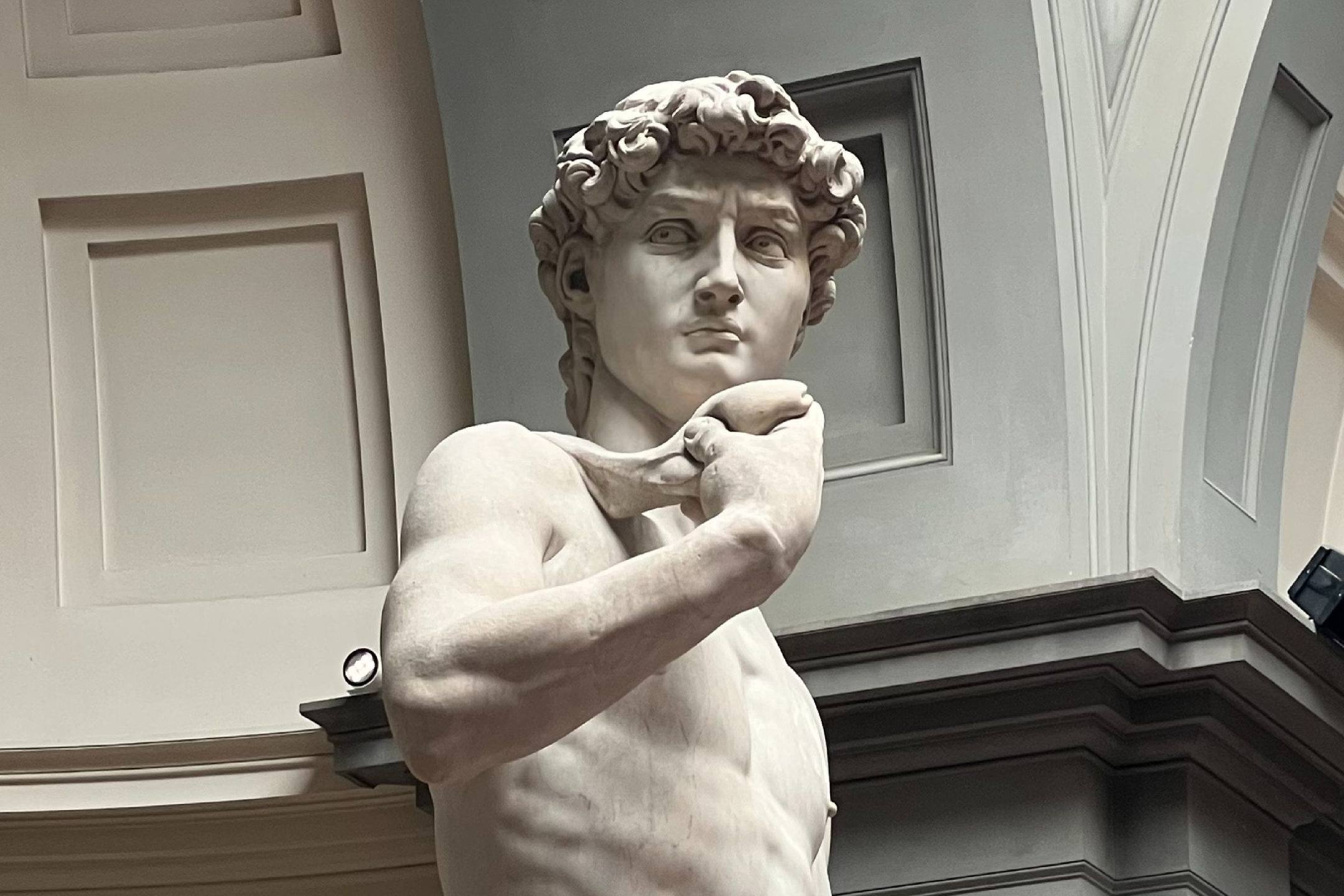
Statues have been around for thousands of years, capturing the essence of cultures, leaders, and legends. From the towering Statue of Liberty to the ancient Great Sphinx of Giza, these monumental creations tell stories of human achievement and artistic prowess. Ever wondered why some statues have missing limbs or what the world's tallest statue is? Statues aren't just stone or metal; they hold secrets, historical significance, and sometimes even mysteries. Whether you're fascinated by their artistic beauty or intrigued by their historical context, there's always something new to learn about these silent sentinels. Let's dive into 38 captivating facts that will make you see statues in a whole new light.
Key Takeaways:
- Statues have been around for thousands of years, representing different cultures and eras. From the Great Sphinx of Giza to the modern Statue of Unity, they continue to inspire and hold deep cultural significance.
- Statues come in all shapes and sizes, made from materials like bronze, marble, and even ice. They appear in popular culture and can spark controversy, but they also bring quirky fun to cities around the world.
Ancient Statues
Statues have been around for thousands of years, capturing the essence of different cultures and eras. Here are some fascinating facts about ancient statues.
-
The Great Sphinx of Giza, built around 2500 BC, is one of the oldest and largest statues in the world. It stands 66 feet tall and 240 feet long.
-
The Statue of Zeus at Olympia, created by the sculptor Phidias around 435 BC, was one of the Seven Wonders of the Ancient World. It was made of ivory and gold-plated bronze.
-
The Colossus of Rhodes, another of the Seven Wonders, was a giant statue of the sun god Helios. It stood about 98 feet tall and was constructed in 280 BC.
-
Moai statues on Easter Island were carved by the Rapa Nui people between 1250 and 1500 AD. These monolithic human figures have oversized heads, making up about one-third of the statue's height.
-
The Terracotta Army, discovered in 1974 in China, consists of over 8,000 life-sized statues of soldiers, horses, and chariots. They were buried with the first Emperor of China, Qin Shi Huang, to protect him in the afterlife.
Famous Modern Statues
Modern statues continue to inspire and awe people around the globe. Here are some notable examples.
-
The Statue of Liberty, a gift from France to the United States in 1886, stands 305 feet tall. It symbolizes freedom and democracy.
-
Christ the Redeemer in Rio de Janeiro, Brazil, is a 98-foot-tall statue of Jesus Christ. Completed in 1931, it has become an iconic symbol of Christianity.
-
The Motherland Calls in Volgograd, Russia, is a massive statue commemorating the Battle of Stalingrad. It stands 279 feet tall, making it one of the tallest statues in the world.
-
The Thinker by Auguste Rodin, created in 1902, depicts a man in deep thought. It has become a symbol of philosophy and intellectualism.
-
The Little Mermaid statue in Copenhagen, Denmark, was unveiled in 1913. It is based on the fairy tale by Hans Christian Andersen.
Unique Materials and Techniques
Statues can be made from a variety of materials, each offering unique characteristics and challenges. Here are some interesting facts about the materials and techniques used in statue-making.
-
Bronze, an alloy of copper and tin, has been used for statues since ancient times. It is durable and allows for fine details.
-
Marble, a metamorphic rock, has been a popular material for sculptures due to its beauty and workability. Michelangelo's David is a famous example.
-
Granite, a hard and durable stone, is often used for large outdoor statues. The Mount Rushmore National Memorial is carved into a granite mountain.
-
Wood has been used for statues in many cultures, including African and Polynesian art. It is lightweight and easy to carve but less durable than stone or metal.
-
Ice sculptures, though temporary, can be incredibly detailed and beautiful. They are often created for festivals and competitions in cold climates.
Cultural Significance
Statues often hold deep cultural and symbolic meanings. Here are some examples of statues with significant cultural importance.
-
The Buddha statues in Asia, such as the Great Buddha of Kamakura in Japan, represent enlightenment and peace.
-
Hindu temples in India are adorned with statues of gods and goddesses, each symbolizing different aspects of life and the universe.
-
The Olmec colossal heads in Mexico, carved from basalt, are believed to represent ancient rulers or deities.
-
Totem poles of the indigenous peoples of the Pacific Northwest are carved with figures representing family lineage, stories, and spiritual beliefs.
-
The Winged Victory of Samothrace, an ancient Greek statue, symbolizes victory and is displayed prominently in the Louvre Museum in Paris.
Record-Breaking Statues
Some statues stand out due to their sheer size or unique records. Here are some record-breaking statues from around the world.
-
The Spring Temple Buddha in China is the tallest statue in the world, standing at 502 feet including its pedestal.
-
The Statue of Unity in India, completed in 2018, is the tallest statue of a historical figure. It stands 597 feet tall and depicts Sardar Vallabhbhai Patel.
-
The Ushiku Daibutsu in Japan, a statue of Amitabha Buddha, stands 394 feet tall and includes an observation deck.
-
The Laykyun Sekkya Buddha in Myanmar is the second tallest statue in the world, standing at 381 feet.
-
The Motherland Monument in Kyiv, Ukraine, is the tallest statue of a woman in the world, standing at 203 feet.
Statues in Popular Culture
Statues often appear in movies, books, and other forms of popular culture. Here are some examples of statues that have made their mark in pop culture.
-
The Statue of Liberty appears in numerous films, including "Planet of the Apes" and "Ghostbusters II."
-
The Thinker by Rodin is featured in the movie "Night at the Museum: Battle of the Smithsonian."
-
The Christ the Redeemer statue is prominently featured in the animated film "Rio."
-
The Moai statues of Easter Island appear in the animated movie "Night at the Museum."
-
The Rocky Balboa statue in Philadelphia, created for the "Rocky" film series, has become a popular tourist attraction.
Controversial Statues
Some statues have sparked controversy due to their subjects or locations. Here are a few examples of controversial statues.
-
The Confederate statues in the United States have been the subject of debate and removal due to their association with racism and slavery.
-
The statue of Cecil Rhodes at the University of Cape Town in South Africa was removed after protests over his colonial legacy.
-
The statue of Christopher Columbus in various locations has been vandalized or removed due to his role in the colonization of the Americas.
-
The statue of Edward Colston in Bristol, England, was toppled and thrown into the harbor during Black Lives Matter protests in 2020.
-
The statue of King Leopold II in Belgium has been defaced and removed due to his brutal colonial rule in the Congo.
Fun Facts About Statues
Statues can also be quirky and fun. Here are some light-hearted facts about statues.
-
The Manneken Pis in Brussels, Belgium, is a small statue of a boy urinating. It has over 900 different costumes that it wears on special occasions.
-
The Charging Bull statue in New York City's Financial District is a symbol of financial optimism and prosperity.
-
The Pissing Pug statue in Tokyo, Japan, is a playful sculpture of a dog lifting its leg to urinate.
Statues: More Than Just Stone
Statues aren't just chunks of stone or metal; they're windows into history. From the ancient Colossus of Rhodes to the modern Statue of Liberty, each one tells a unique story. They honor heroes, celebrate victories, and commemorate events that shaped our world. Some, like Michelangelo's David, showcase incredible artistry, while others, like Mount Rushmore, symbolize national pride.
These monuments also reflect the values and beliefs of their time. They can inspire, provoke thought, or even spark controversy. Whether you're a history buff, an art lover, or just curious, there's always something new to learn from these silent storytellers.
Next time you pass by a statue, take a moment to appreciate its significance. You might just discover a fascinating piece of history you never knew existed. Statues are more than just stone; they're living history.
Frequently Asked Questions
Was this page helpful?
Our commitment to delivering trustworthy and engaging content is at the heart of what we do. Each fact on our site is contributed by real users like you, bringing a wealth of diverse insights and information. To ensure the highest standards of accuracy and reliability, our dedicated editors meticulously review each submission. This process guarantees that the facts we share are not only fascinating but also credible. Trust in our commitment to quality and authenticity as you explore and learn with us.


